
The VR ecosystem has developed an incredible amount in the past 6 months. We’re now at a point where hardware is shipping without delay, awesome new experiences are hitting Steam weekly but one thing remains difficult—access. An amazing number of people, even in the depths of the tech scene, have heard about roomscale VR, are intrigued, but have not taken their first step.

Every new technology has a conversion funnel and the funnel for roomscale VR is challenging on multiple fronts. The equipment is expensive, difficult to transport, challenging to setup, and, once everything is working, it’s a time-consuming single player experience. I love demoing, I can only imagine how many I’ve done at some point, but the friction is real. If the VR community hopes to grow on any exponential level, we need to figure out how to deliver quality demos to significantly more people. The way in which VR is introduced to people in the early days of this community will have an outsized impact on the ecosystem to follow.
My friend Leigh Christie, who directs the NowLab at Isobar, is also obsessed with VR and interested in this challenge. We started to wonder, what would it take to demo roomscale VR to 100+ people in one night? How many rigs would you need? Would people buy tickets? Could events be a sustainable model for others to replicate? We decided to give this a shot. These are 12 things that we learned after a crazy night of roomscale VR in Brooklyn.
1.) People will pay (at least $30) for tickets to experience high end VR

This was a semi-private event with a $30 ticket price. I sent an email blast to a group of tech/media friends in NYC and we sold 100 tickets in a few days. A huge portion of the NYC tech and media community has yet to try roomscale VR and this turned out to be a reasonable price point.
2.) The venue is hugely important and small private rooms are the best for demos
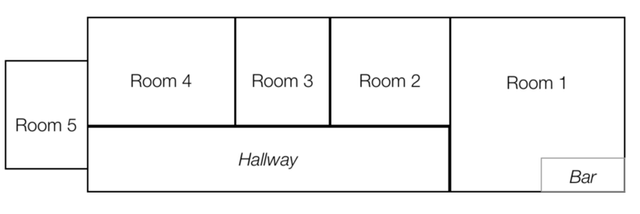
Many of the VR events I’ve been to on an open floor plan have been awkward disasters. Strapping on a headset (especially for a first timer) is isolating and makes you feel vulnerable. Small, private rooms can do a great deal to help the user feel secure and maintain presence. We found a venue with five rooms (thx Thought Catalog/Chris!) and setup a demo in each room designed to match the space.
3.) Waiting is inevitable but there are plenty of things you can do to make it less
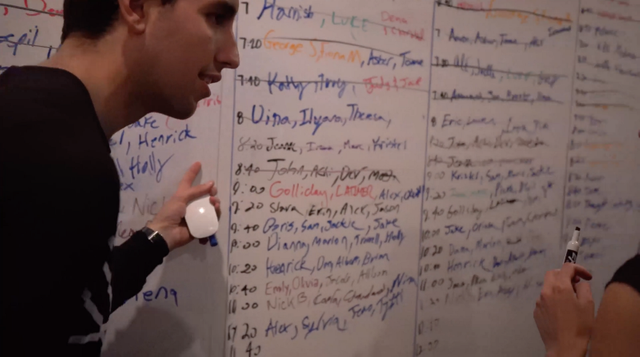
Imagine hosting a film festival for 100 people but only having 5 seats—this is the reality of a roomscale VR event.
Our strategy was to grid the viewing times on a whiteboard. Once you entered the event, you were told to go to the whiteboard, there you met with the person organizing the board and you could sign up for a room at a specific time slot in groups of four. We liked this method of doing it because you didn’t have to wait outside each room. Instead you could sign up, grab a drink, and hang in the larger main room which had social VR entertainment (Tilt Brush and Playthings). This was a decent first pass for organizing, it got a bunch of people through demos, but it went off the rails toward the end of the night.
4.) VR Sherpas

The person who demos will have a huge impact on the user. Taking your first step in VR can be scary. Simply putting it on correctly has its challenges but once you’re in, users will have a string of interface questions and reactions. You need a guide to help you get through this. Every room had a sherpa who was well versed in the individual experience being demoed and would help ease them out of it when they reached their time limit. This ultimately meant that we could get people through a lot more demos.
5.) The interest in roomscale VR is wide
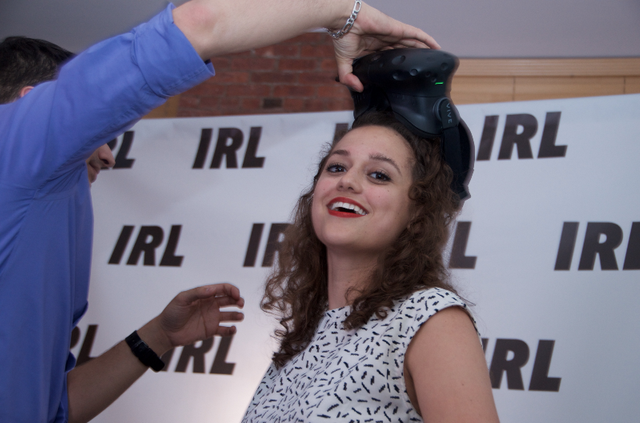
This could have to do with the original email blast to tech/media friends in NY but the interest and turn out was wide—gender split was 50/50. Many of the most popular roomscale experiences like Tilt Brush, Irrational Exuberance, The Blu, and a bunch from The Lab, defy typical gendered video game categories.
6.) Spectators want to see what’s going on inside the user’s headset

It’s boring to watch someone in VR if you can’t see what they’re experiencing. And if you’re in VR, and you start to hear others tuning out, you can feel self-conscious. A visual and sonic window helps tremendously with that.
7.) Zero nausea reported
Zero. The Vive has awesome fidelity and great tracking.
8.) Mass demos provide invaluable feedback for VR creators
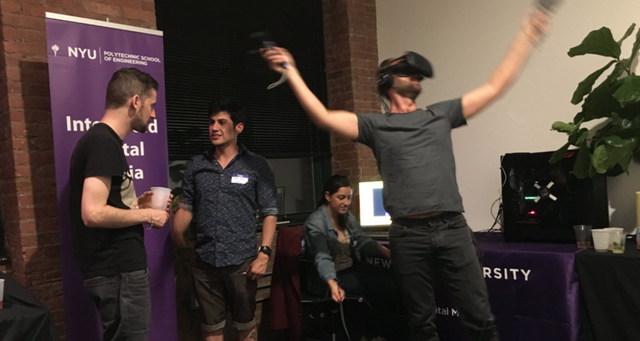
Two of the five rooms had the creator of the VR experience in the room watching users go through it. One was George Michael who created the game Playthings and the other was a team from NYU’s neurology and computer science department who created an experience where you can step inside a human brain. VR creators can always have friends over to check out your work, or send a link, but it’s a whole other thing to watch a slew of strangers step through it. You see the bugs, where they lose it, and you also see where they connect.
9.) VR events take a ton of work and have thin margins
At the end of the day, we broke even with this event. And we only broke even because a number of awesome people volunteered or volunteered their gear and venue (thx to all who volunteered by the way, and to Chris at Thought Catalog for hooking us up with the venue). Ticket sales just hardly covered the costs of some of the general things that came with covering a party of this size: a bar, insurance, some extra gear, and food.
10.) Sponsored demos could provide much needed revenue for indie VR creators
The near term revenue outlook for indie VR creators is bleak. The market for those buying VR games is small—it’s estimated that there are less then 100,000 Vives in circulation (compare that to billions of smartphones or PCs). Brands are extremely interested in producing high end VR content right now, or sponsoring it, but they need a distribution vehicle. Events could be that.
- ) Many who went through demos expressed a desire to buy an HTC Vive
We had an amazing crew doing qualitative exit interviews (Elizabeth Spiers’s new company The Insurrection). They found that an overwhelming number of those they interviewed expressed a desire to purchase a rig. Their price point? $800–$1000, with some outliers saying as much as $2,000.
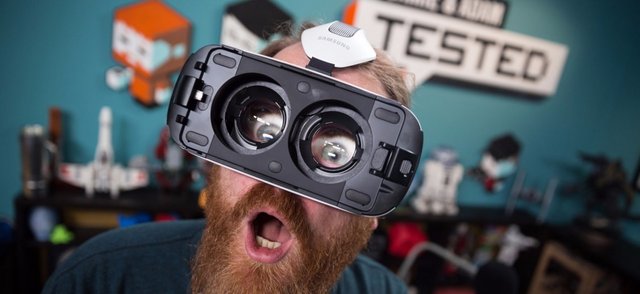
I upvote U
Downvoting a post can decrease pending rewards and make it less visible. Common reasons:
Submit
Hi! I am a content-detection robot. This post is to help manual curators; I have NOT flagged you.
Here is similar content:
https://medium.com/@CodyBrown/how-to-introduce-100-people-to-roomscale-vr-in-one-night-320735eb93a6
Downvoting a post can decrease pending rewards and make it less visible. Common reasons:
Submit